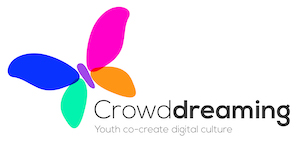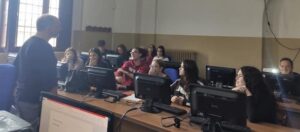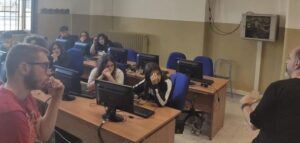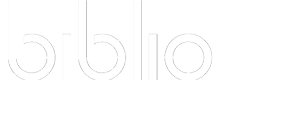The full version of the article is to be published in the AIUCD 2021 proceedings.
By Mauro De Bari, Nicola Barbuti. Department of Humanities (DISUM), University of Bari Aldo Moro, Bari, Italy
ABSTRACT
Digital Transformation is changing the daily life of the communities, but a clear definition of what can be defined as Digital Cultural Heritage (DCH) still misses. Moreover, in this period Cultural Institutions (CI) have been under pressure because of the COVID-19 pandemic. This paper proposes a digital strategy based on a central role of the cultural heritage users. To this goal, a first-rate need is to hire new professionals provided with digital knowledge and skills.
KEYWORDS
Digital Cultural Heritage (DCH), Cultural Institutions (CI), COVID-19.
1. INTRODUCTION
The recent COVID-19 pandemic has modified worldwide the relation between people and cultural heritage, increasing the use of digital media to supply the lack of physical enjoyment. Full cultural ecosystem is still inaccessible: museums, archives, libraries, archaeological and monumental sites are closed because they cannot guarantee safe access to their places. Moreover, they haven’t planned useful digital strategies or programs for fostering the enjoyment of heritage.
Recently, several purposes in the digital cultural field have been hypothesized. The Italian cultural system is living a quick change, and we need to understand how CI could address the digital challenges fostering the creation of DCH.
But the question is: does DCH exist? In the last years, a first proposal for defining what we could identify as cultural among the digital floating “magma” has been drafted as follows: “Digital Cultural Heritage is the ecosystem of processes, Born Digital and Digitized entities, virtual phenomena certified and validated as meeting the requirements in since their genesis and over time, which will became testimonies, manifestations and expressions of the evolutionary processes that identify and connote each community, socio-cultural context, simple or complex ecosystem of the Digital Age, assuming the function of memory and source of knowledge for future generations”[1].
This definition claims the topic of a recent Horizon Call: “So far, digitisation focused mainly on capturing the visual appearance of individual objects, collections or sites. There is a real need to establish a comprehensive picture of the studied assets, capturing and re-creating not only visual and structural information, but also stories and experiences (stored in language data), together with their cultural and socio-historical context, as well as their evolution over time”.
Digital Humanities (DH) too must address the challenges of digital preservation and the opportunities coming from CI. Founded in 2019, Istituto Centrale per la digitalizzazione del Patrimonio Culturale has not suggested a useful strategy that guarantees an integration between heritage and digital processes. The modern society should choose a new approach to tackle the challenge of how best to convey the DCH. The goal of institutions is to ponder an innovative emotional offer [2]: the new DCH connected with the tradition. The key is not to destroy the old cultural systems, but to develop processes that unify tradition, innovation and long-term necessities.
2. THE ITALIAN DISCOVERY OF THE DIGITAL
The cultural ecosystem needs processes to facilitate the production of digital cultural artefacts. During the pandemic, many cultural institutions attempted to offer digital services aimed at encouraging the enjoyment of their CH. Italian Institutions have offered several proposals to promote something they consider similar to DCH. However, several issues have emerged because of the conclamant confusion existent in terms of digitization.
Digital artefacts created by augmented, mixed and immersive reality processes are rare. What is considered innovative and avant-garde in Italy, in other Countries is practice. Still, the legitimate question is whether these digital cultural services offered by galleries, libraries, museums which have received an enormous consensus during this peculiar context, can receive the same attention at the end of the closure imposed by law? One of the hypotheses born from the MIBACT was the creation of a Netflix of culture. However, the idea of payment for digital cultural services could be a winning action?
What will happen when the closing of CI ends? Users will have the opportunity to choose between analogue and digital content: is it sure that Italian users will choose innovation?
 The Italian offer is limited in terms of production and processes used, except some rare cases. An example based on innovation and user interaction is offered by the Erasmus+ project “Crowddreaming: Youth Co-Create Digital Culture“. The users experiment on multiple levels, starting from the interaction of young people with the practice of Crowddreaming and Museater methodologies, meshing the museum and the theatre in an original way of conceiving the DCH [3].
The Italian offer is limited in terms of production and processes used, except some rare cases. An example based on innovation and user interaction is offered by the Erasmus+ project “Crowddreaming: Youth Co-Create Digital Culture“. The users experiment on multiple levels, starting from the interaction of young people with the practice of Crowddreaming and Museater methodologies, meshing the museum and the theatre in an original way of conceiving the DCH [3].
The idea of community lacks in Italian CI: the user doesn’t feel himself like a part of a bigger system. Italians try to be prosumers [4], but the actual state-of-the-art doesn’t permit it. The audience has a marginal role in terms of consideration. Sometimes, CI are synonymous with elitist knowledge [5]: most of the public museums, libraries and archives open more for academic finalities rather than to offer a good user experience.
Institutions must improve their offer with a multifaceted staff with digital abilities. In this, the digital and its processes can be facilitators. It is crucial to understand which abilities must learn the professionals that will work inside CI to avoid the externalization of digital work outside their realities. Recently, the Department of Humanities DISUM of University of Bari “A. Moro”, in collaboration with important international partners, has launched the Biblio project. The project aims to identify two different levels of professionals with digital capacities in the librarian field. The COVID-19 pandemic has confirmed that the digital is a need more than before. The cultural system should promote a flexible strategy to improve those realities that try to invest in the digital. As Biblio project is researching good practices to promote the training of professionals, Italian CI should activate academics and researchers to ponder a competent category of digital cultural professionals capable to maximize the productivity, the attractiveness and the professionalism in digital Italian Institutions processes. This solution will influence the user category too, that will be a functional part of the cultural system.
REFERENCES
[1] Barbuti, Nicola. “Thinking Digital Libraries for Preservation as Digital Cultural Heritage: By R to R4 Facet of FAIR Principles”. International Journal on Digital Libraries (Open Access, 2020). https://link.springer.com/article/10.1007/s00799-020-00291-7
[2] Alelis, Genevieve, Bobrowicz, Ania, and Ang, Chee Siang. “Comparison of engagement and emotional responses of older and younger adults interacting with 3D cultural heritage artefacts on personal devices”. (2015). https://kar.kent.ac.uk/50319/1/Comparison%20of%20engagement%20and%20emotional%20responses%20of%20older%20and%20younger%20adults%20interacting%20with%203D%20cultural%20heritage.pdf
[3] Barbuti, Nicola, De Felice, Giuliano, Di Zanni, Annalisa, Russo, Paolo, and Valentini, Altheo. “Creatinig Digital Culture by digitizing Cultural Heritage: the Crowddreaming living lab method”. (2020): 114-116. http://aiucd2019.uniud.it/wp-content/uploads/2019/01/BoA-2019_PROVV.pdf
[4] Bravi, Laura, Murmura, Federica, and Santos, Gilberto. “Attitudes and behaviors of Italian 3D prosumer in the Era of Additive Manufacturing”. Procedia Manufacturing 13 (2017): 980-986. https://www.researchgate.net/publication/320243961_Attitudes_and_behaviours_of_Italian_3D_prosumer_in_the_Era_of_Additive_ Manufacturing
[5] Visser, Anna Maria. “Quale pubblico per i Musei italiani?”. Archeologia Viva (2016). https://www.academia.edu/41659163/QUALE_PUBBLICO_PER_I_MUSEI_ITALIANI

